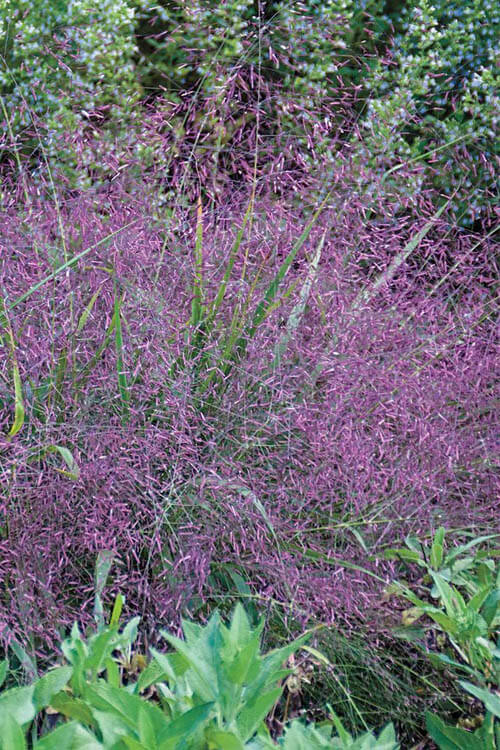Air plants, scientifically known as Tillandsia, are fascinating botanical wonders that have captured the hearts of plant enthusiasts and designers alike. These unique plants belong to the Bromeliad family and are renowned for their ability to grow without soil. With over 600 species, air plants exhibit a stunning diversity in form, color, and size. In this comprehensive guide, we will explore air plants, including their types, benefits, importance, and versatile uses in landscaping.
Types of Air Plants
Air plants come in various species, each with distinctive characteristics. Some of the most popular types of air plants include:
Tillandsia Ionantha: This small, compact air plant is one of the most common varieties. It boasts vibrant green leaves that turn bright red or pink when it blooms, making it a popular choice among air plant enthusiasts.
Tillandsia Xerographica: Known for its striking appearance, the Xerographica features silvery-gray, curly leaves that give it an elegant, almost otherworldly appearance. This species is often used as a centerpiece in decorative arrangements.
Tillandsia Stricta: With its slender, spiky leaves and vivid green color, the Stricta is a visually appealing air plant. It's commonly found in Central and South America and thrives in various environments.
Tillandsia Caput-Medusae: Named after the mythological figure Medusa, this air plant has winding, snake-like leaves that create a mesmerizing display. It's native to Mexico and Central America.
Tillandsia Bulbosa: The Bulbosa is characterized by its bulbous base and long, curly leaves. This plant can grow in various orientations, making it a versatile choice for creative landscaping designs.
Benefits of Air Plants
Air plants offer a range of benefits, both aesthetic and practical, that contribute to their popularity in the world of gardening and landscaping.
Low Maintenance: Air plants are straightforward, requiring minimal attention. They do not need soil, as they absorb nutrients and water through their leaves. A regular misting or dunking in water is usually sufficient to keep them healthy.
Air Purification: Like all plants, air plants improve air quality by absorbing CO2 and releasing O2.Additionally, they can filter out certain toxins and pollutants, making them a natural air purification solution.
Aesthetic Appeal: The diverse shapes, colors, and sizes of air plants make them a unique and visually appealing addition to any indoor or outdoor space. These items can be seamlessly integrated into different design aesthetics, ranging from minimalistic to bohemian.
Space-Saving: Air plants can be mounted on walls, hung from ceilings, or displayed in unique containers, making them great space-saving options. Their versatility allows for imaginative arrangements that make the most of limited space.
Stress Reduction: Indoor gardening, including caring for air plants, has been shown to reduce stress and promote relaxation. Tending to these plants can have a calming effect on individuals.
Importance of Air Plants
Air plants hold ecological and environmental significance beyond their aesthetic appeal. Understanding their importance is crucial for appreciating their role in ecosystems and landscaping.
Ecosystem Roles: In their native habitats, air plants play essential roles in various ecosystems. They provide habitats and food sources for insects, birds, and other wildlife. Additionally, they contribute to nutrient cycling by absorbing nutrients from the air and rainwater.
Biodiversity: Air plants contribute to biodiversity by adding to the overall species richness in their native environments. They are often found in epiphytic communities, growing on trees or rocks alongside other species.
Conservation: Due to habitat destruction and illegal collection, some air plant species are now classified as threatened or endangered. Conservation efforts are essential to protect these unique plants and their ecosystems.
Education: Air plants provide valuable educational opportunities. Studying their growth patterns, unique adaptations and ecological interactions can help raise awareness about the importance of preserving diverse ecosystems.
Uses of Air Plants in Landscaping
Landscaping with air plants opens up a world of creative possibilities. Here are some innovative ways to incorporate these unique plants into your outdoor spaces:
Vertical Gardens: Air plants are ideal for vertical gardens, where they can be attached to walls or fences. Create eye-catching displays by mixing different species and sizes, allowing them to cascade down or grow upwards.
Terrariums: Air plants are a perfect choice for terrariums. Please place them in glass containers with decorative elements such as sand, stones, or shells to create miniature landscapes that require minimal maintenance.
Living Art: Design living art pieces by arranging air plants on wooden frames, corkboards, or wire sculptures. These living artworks can be displayed indoors or outdoors, adding a touch of nature to any setting.
Hanging Gardens: Suspend air plants from hanging baskets, macramé hangers, or driftwood to create floating gardens. These installations can be placed in gardens, patios, or your home.
Container Gardens: Plant air species in unique containers like seashells, old teacups, or driftwood logs. These container gardens are portable and can be placed strategically to enhance your landscape's visual appeal.
Rock Gardens: Integrate air plants into rock gardens by nestling them in crevices and between rocks. Their ability to thrive in rocky environments makes them a natural fit for this landscaping style.
Ground Covers: Incorporate low-growing air plants as ground covers in your garden beds. They can provide a whimsical, ethereal appearance, especially when they bloom.
Air plants, with their diverse species, low maintenance requirements, and aesthetic appeal, are an excellent addition to any landscaping project. Beyond their decorative value, air plants contribute to air purification, biodiversity, and ecosystem health. Their importance extends beyond the ornamental, making them a valuable part of the natural world.
As you explore the world of air plants, consider the various types available and the creative ways to incorporate them into your landscaping endeavors. Whether you create vertical gardens, terrariums, living art, or any other imaginative arrangement, air plants are sure to captivate and enhance the beauty of your outdoor spaces. Moreover, in doing so, you'll contribute to the conservation and appreciation of these unique and remarkable plants. TN Nursery offers the finest air plants, showcasing a diverse selection of species and providing expert care advice, ensuring healthy, vibrant additions to your collection.


















































